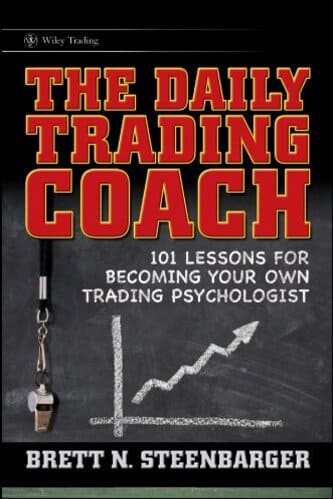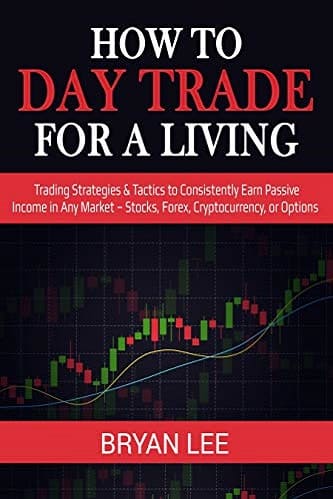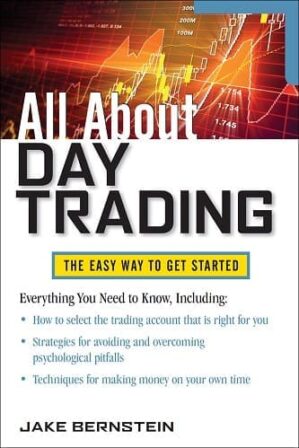Articles
The Trading Plan By Cory Mitchell
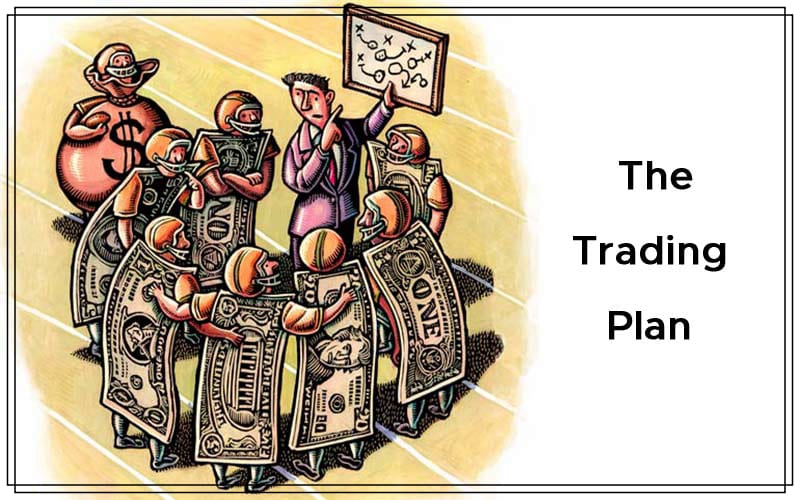
When creating a trading plan, you have to take into account all the possible contingencies. Here are the steps you should go through when designing your game plan. A trading plan is your carefully thought-out and tested way of approaching and beating the market over the long term. It is the course of action for entering, exiting, and managing your trades so that all contingencies are considered before a trade ever takes place. With such a plan, emotions are left out of the trading equation, and only tangible criteria are used to make trades. Emotions can cause many problems in trading, including entering trades out of boredom, entering trades too early or not at all because of anxiety, staying in trades after profits should have been taken due to an emotional attachment to a tradable, or exiting too early and for a minuscule profit when it should have been left open longer.
THE BENEFITS
Having a trading plan will allow you to navigate different circumstances methodically and logically. This process can be repeated, tested, and then altered if results are not up to your standards. If you trade based on emotion, you will not be able to go through this process because your emotions will always get in the way and you will react accordingly. Problems can be avoided by not having to trade on reactions to the moment. The market is in constant flux, which in turn means emotions can be in constant flux. Well-laid-out trading plans will allow traders to avoid this barrage of emotion as they will know in advance how to handle each situation as it arises.
Designing a trading plan gives you ground rules by which to trade and a consistent basis for which your results can be compared using different trading criteria. If you lose money and you are still sticking to the plan, you will know it is your plan that needs to be worked on. If you don’t have a plan, you have no real idea what is causing your losses, since they are not based on anything other than your thoughts and emotions at the time of the trade. Having a plan will save you time and money as you pursue consistent profitablility.
On occasion, the markets do reward bad trades (or, at least, trades that have not been thought through). This is known as random reinforcement — believing you have a winning trading system when you do not. Due to the sheer number of transactions possible, some trades will randomly work out when no forethought was given to the trade at all. The true trader strives for consistency over the long term. It is essential to have a trading plan so that over the course of many trades you will be able to see if your success (or failure) is related to sheer, dumb luck.
In order to develop a trading plan, there are several steps that we should go through. The plan should not leave room for traders to question what to do during a trade. All possible questions must be looked at before trades are made, so that when money is on the line, traders will know that they can rely on their plan because it was well thought out and all pertinent questions were asked and scrutinized during the making of the plan.
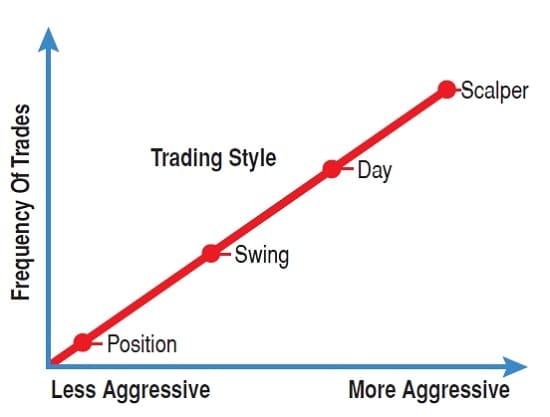
THE INITIAL QUESTIONS
Before you place a trade, you need to know why you want to trade, what your objectives are, and what type of person you are. Is it extra income, a main source of income, or capital growth that you want to generate through trading? Are you going to do it full or part time? How much money do you have to work with, and what type of return do you expect from your money? Once you have answered these questions, you will have a rough idea of what you want to do with your trading and you will be able to build a trading plan. You will want to stipulate all your objectives in regards to trading, not just answer the questions.
PERSONALITY
There are many forms of trading and even more types of trader personalities. It is crucial to build a trading plan based on a trading style that complements your personality; selecting a style at odds with your personality is a sure way to lose money and ultimately burn yourself out. If you don’t like to sit idle, then you may want to look at a trading style that allows you to make more trades, such as daytrading or swing trading. If you are impatient, you probably want your trades to be quick and more frequent. If you worry about positions or money, you may want to take on several positions for the longer term, but with small amounts of capital on each. Looking at your personality and the way you react to stressful situations will give you a good idea of the trading style that will be the best fit for you. Then fine-tune the style you choose. The trading style you choose should fit your goals and objectives as well as your personality.
WHAT TO TRADE
Deciding what market to trade will ultimately be determined by your capital position and personality. Certain markets require more funds than others due to leverage restrictions and legal requirements across different countries. Some markets are historically more volatile than others as well. The stock market, the stock index futures market, and the better-known commodity markets are the ones that most traders should stick to. Trading those markets with sufficient volume to enter and exit your positions easily is recommended.
Once you know how and what you are going to trade, you can start to develop your trading plan. Your plan will be a set of rules, written down for easy reference, which you will use to execute every trade you make. If you deviate from the plan, then there is no point in having one. That is why it is worth taking the time to develop a plan that you believe will be profitable, so that you will not sway when the market goes against you. You know your plan will be successful over the long term, but if it is not, you know it is your plan that needs adjustment.
Suggested Books and Courses About Day Trading
HOW OFTEN TO TRADE
Deciding how often to trade will be based on your personality and your trading objectives. A trading plan can be created for any style of trading and followed by any personality type, but sticking to the system will be easier if the plan is designed around a trading style that reflects the trader’s personality. Trade a style that would not reflect your personality only if you have no choice. This might include believing you would be well suited to daytrading even though you have a full-time job and thus cannot daytrade. In this case, developing a trading plan for a different method of trading would be suitable as long as you realize it may go against some of your basic tendencies, and you decide to commit to the system anyway.
The style of trading chosen will have a direct impact on how often trades are made. Daytraders make many trades in one day, swing traders make a trade or several trades every few days or weeks, and investors make trades (or investments) over many months or years. Since the style of trading determines the number of transactions made, it will also reflect commissions and the amount of fees paid to a broker. This should also be considered in any trading plan.
A trading plan must be profitable when accounting for commissions and other costs, and the extent of profitability over fees should be estimated using backtesting of old market data to determine if the trading plan is even worth implementing. While testing a plan on old data does not guarantee profitability today, you can be fairly sure that something that has never worked in the past is not likely to start working all of a sudden tomorrow. Trading objectives will also determine how often trades are made. Having your objectives in sync with your plan is important for you to be able to stick with it for the long term. Having unreasonable objectives for your plan will only lead to problems and possible abandonment of your plan. Realistic objectives must be based on your current circumstance, how much time you dedicate to market study, current level of market understanding, capital available, and any other factors related to your situation.
There are three main parts to a trading plan — money management, entry rules, and exit rules. After creating a plan, it will be important to test it on old market data for profitability, and then in real time. Constant monitoring of the trading plan is advisable.
MONEY MANAGEMENT
Money management should be your first concern. This is the most overlooked area, and ignoring it is why many traders go broke. Not every trade will be a winner, so controlling losses using position sizing and stops is crucial to maintaining profitability over the long term. The basic rule of money management is that no more than 1% of capital should be risked on any one trade. This does not mean that a trader should only utilize part of his or her capital. Rather, the trader can be fully invested in a single instrument (or several), but a stop in place will keep the potential loss to approximately 1% of trading capital or less. Stops should not be placed at random levels such as placing a stop at the 1%loss of capital level. Instead, you will use your money management combined with your entry signals so that you can enter trades and implement stops at reasonable technical levels.
To give an example, if a trader has a $50,000 trading account, he or she will not risk more than $50,000 x 0.01 =$500 on a single trade. Therefore, if a stock is purchased at$30, the most the trader should lose is $500 if all capital is employed. The trader has the option of using all his or her capital and buying 1,600 shares (rounded down from 1,666), or buying a smaller amount. If the trader purchases 1,600 shares at $30, their maximum stop would be at $29.69. At this price, the trader would have lost just under $500, or 1% of trading capital on the trade. Each trader should use his or her own variation of this rule and decide if he wants to risk 1% of capital on each trade, or just 1% of capital in use.
In the example, if a trader buys 1,000 shares of the stock at $30, he will have used $30,000. The maximum loss on this trade is $300 for the entire position, based on risking 1% of used capital. The trade will be exited based on an exit strategy, which will be discussed shortly, or when $300 has been lost on the position. The exit price would be $29.70 (1,000 x ($0.30) = -$300) or at a reasonable technical level above this price.
By maintaining a 1% risk level on each trade taken, it will not matter if only a portion or all of the trading capital is being utilized, for at no point will all outstanding trades with their potential losses exceed 1% of total capital. It is better to stick with the 1% stop of capital used for shorter-term trading such as daytrading (don’t lose more than 1% of capital per day). Since trades are exited in a timely fashion, the smaller stop based on 1% of capital used for the trade (as opposed to all capital available) should not cause too many whipsaws, which can deteriorate performance. With volatile stocks that present a good opportunity, it may be prudent to take fewer shares than your capital would allow but use a maximum stop that is 1% of total capital. This is also useful for the longer-term trader to avoid being whipsawed out the market too often.
Finding the ideal position is easy once you know the maximum loss on the trade you are willing to accept, the price of the stock, and a proper technical stop level. Using our same example, if $50,000 is available and a stock is trading at $30, you know that you do not want to risk more than $500 on the one trade. Let’s assume that the stock has shown strong price support at $29.50. Based on technical levels, you would place your stop at $29.40, just below the support level. This means that you are willing to risk $0.60 a share. If your maximum loss is $500, you can determine how many shares (or contracts) to take based on this information. In this case, the trader could take $500/$0.60 = 833, or 800 shares. By taking 800 shares, you can use a proper technical support level/stop for your trade and also not risk more than 1% of your capital. The main thing to remember is that losses need to be controlled. Write down your money management rules, and when in a trade or preparing for a trade, use the rules and do not deviate from them under any circumstances.
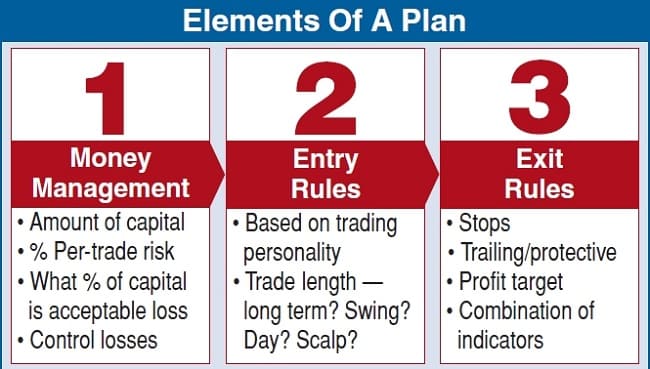
ENTRY RULES
How to enter a trade is probably the most discussed topic among traders. Every trader is looking for a new piece of information that will allow them to get into a bull market right before it happens. While a good entry is important, most traders focus on it way too much. Trying to find the perfect entry is hardly worth the time. Most commonly known entry signals will do fine as long as proper money management and exit rules are implemented. Getting into trades will not be the focus of this article. There are plenty of entry systems out there including buying/shorting on old highs/lows, moving average convergence/divergence (MACD), and stochastic crosses and moving average crosses. You can find one or several you like, then customize and filter them. Pick or create an entry system that goes along with how you would like to trade.
If you want to trade long-term trends, entry signals should be based on long-term indicators so you are not whipsawed in and out of trades. If you want to daytrade, the entry indicators or criteria should be based on short-term movements so potential profits are not outweighed by large losses that may result if stops were based on long-term criteria, such as weekly support and resistance areas, for example. The bottom line is finding an entry criteria that works for your personality and provides for adequate reward based on your stops and money management rules. A potential entry signal for a long-term trader might be:
- A Standard & Poor’s 500 stock rises above its 200-day moving average
- Overall market is trending with an average directional movement index (ADX) above 40
- Volume is rising
- The stock must have a positive increasing money flow indicator
- The stock is over $10
- The stock trades more than two million shares a day.
This is just an example and is not meant to be used for trading purposes. It can be, but all criteria should be validated by back-testing the criteria for profitability on past market data on the same time frame. If the trade is expected to last for several months or a year, the entry criteria should be tested on daily, weekly, or monthly charts. Write down your entry rules and only enter trades when a given instrument matches those criteria. You can have different criteria for different trading styles, but only trade by rules you have written down and tested.
EXIT RULES
Knowing when to exit a good or bad trade is a crucial part of trading. It will not matter how good your entry is if profits are not taken off the table in a timely manner. Exits can be simple or quite complex. There are basically four ways to exit a trading instrument — a stop, trailing/protective stop, profit target, or a combination of indicators (including price, volume, indicators, and time). This part of the trading plan is designed to keep losses from getting too large or giving back too much profit on profitable trades. The maximum loss on a trade will be determined by your money management, but just because you can lose that amount does not mean that you should. Often, stops can be placed much closer to the entry price than the maximum stop-loss allows.
Stop-loss: The exit is known before the trade is placed. Whether mental or automated stops are used, the stop is known and the trader must enter a stop order to monitor the position so that he does not lose more than he determined he would. When a stop is determined before a trade, it is never altered once the trade is executed. Dealing with losing trades is easy; a stop is set and the trade is left alone. When a trade becomes profitable, that is when the trader has several options on how to exit the trade.
Trailing or protective stop: Trailing or protective stops are common and an excellent way to lock in a profit. A trailing stop is where the stop is increased as the price increases, assuming the trader is holding a long position. If a trader is using a stop of $0.50 on a trade, if the stock moves up by $1.00, the trader would keep his $0.50 stop below the current level, thus locking in a $0.50 profit if the stock were to retrace some or all of its gains. If the stock continues to rise, the trader would continue to move up the trailing stop to $0.50 below the price. A trailing stop can be based on a daily close, intraday fluctuations, or be moved only when the price rises by the amount of the stop. A trailing stop is never backed up; for long positions, it is never moved back down if the price falls, and for shorts it is never moved back up if the price begins to rise.
Profit target: Profit targets are another way a trader can exit a trade. Profit targets allow the trader to see the potential risk and reward of a trade before it is placed. Profit targets are especially useful if chart patterns are used for entry signals. Information on common profit targets can be found in most technical analysis trading information. Profit targets do not have to be based on chart patterns; instead, they can be based on company ratios such as a price/earnings ratio. If a stock is purchased because its P/E ratio is lower than the average for its sector and believed to be undervalued, profits could be taken when the company’s P/E reaches the sector average. Using chart patterns is more objective, but if a trader prefers using fundamental data, it can be used. When using a profit target, simply set an offsetting order at the target price to which you expect the instrument to go.
While profit targets are excellent for managing risk and reward ratios and capturing a good piece of a stock’s move, traders sometimes feel as if they are leaving money on the table if the price continues to move in their direction after they have exited at their target. The solution to this is to trade multiple units and exit half or a part of the position at the target price and then implement a trailing stop on the rest of the position. This will lock in a profit but also allow the trader to capture additional gains that may occur while still limiting risk of loss.
Combination exit: A trader may also employ a series of indicators to exit a position. The same criteria used for the entry can also be used as an exit once the original criteria no longer exists. Other indicators can be used to show when the instrument is losing steam. One example of using indicators to exit a position may be to exit:
- When the price moves back below its 200-day moving average, or
- When there is a close below a former swing low or a close below a major trendline, or
- The stock at the end of the day if no other exit criteria has been triggered.
Exits should be tested for profitability given entry and money management criteria. Coming up with your own signals and testing them will give you confidence in your signals, and the likelihood that you will stick to the plan is greatly increased.
THAT’S A PLAN, STAN
Money management, entries, and exits all work together. All three areas must be focused on to come up with a profitable trading system. All areas must work in synergy with each other. The trading plan should always be written down for easy reference so the emotions of trading do not cause the trader to deviate from the plan that was created while the mind was clear and the plan tested for profitability. The more confident a trader is in his plan, the less likely it is that the trader will make foolish mistakes.
It is also important that everyone realizes that trading losses do occur, and a string of losses does not necessarily mean that a trading plan is not valid. After several trades have been made, the trader can analyze the trades and see how they could have been improved. But it is important not to keep tinkering with a trading plan once time has been taken to test it and write it down. Give the plan time to work. Market conditions do change so continually analyzing and adjusting may be required over the long term, but making too many changes could change a winning a plan into a losing one just before it is about to become profitable. A rule of thumb is that if you have experienced 10 or more losses in a row in spite of following your system, you may need to make changes. If you are sticking to your money management rules, then you will not have lost more than 10% of your capital. That can be made back with a thorough analysis and some changes.
When making a trading plan, it should account for all contingencies that may occur in trading. Money management rules should explain exactly how much is risked on each trade. Entry and exit rules should be laid out and only when a trade matches that exact criteria should it be entered or exited. Taking time to make such a plan will allow you to approach the market with confidence and give you a much greater chance of beating the market over the long term.
Cory Mitchell is an independent trader specializing in short-to medium-term technical strategies.


